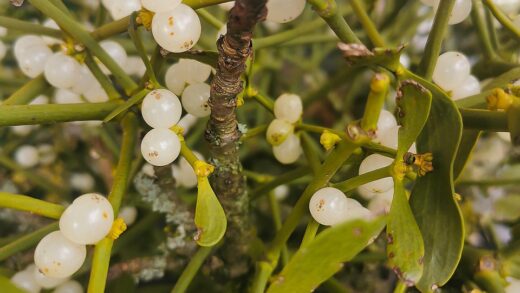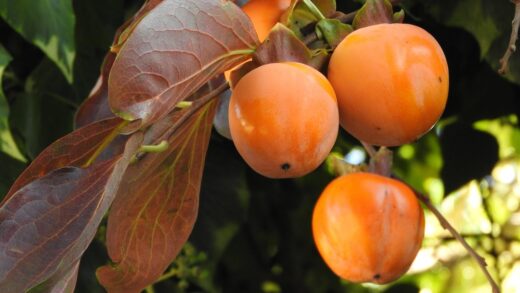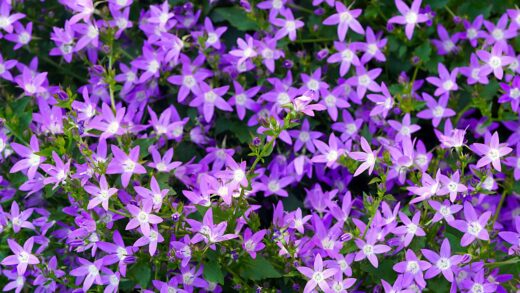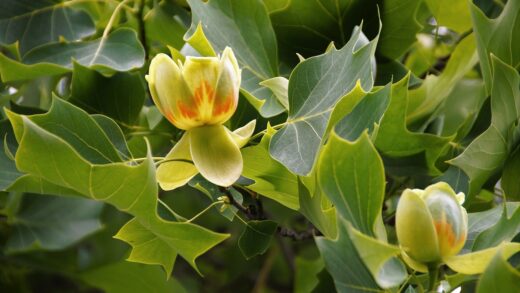The practice of pruning and cutting back the Banat peony is a simple yet profoundly important aspect of its annual care, focused primarily on sanitation, disease prevention, and maintaining the long-term health of the plant. Unlike many shrubs and perennials that require complex pruning to shape them or encourage flowering, the peony’s needs are straightforward. The main pruning event is the annual removal of all foliage in the autumn, a critical step in managing disease. Other minor cuts, such as deadheading spent flowers, are done for aesthetic reasons and to redirect the plant’s energy. Understanding when and how to perform these simple tasks is key to ensuring your peony remains vigorous and disease-free for decades.
It is essential to understand that the primary purpose of pruning a peony is not to control its size or shape. This herbaceous perennial has a naturally beautiful, clump-forming habit that should be allowed to develop without interference. The annual growth cycle involves new shoots emerging from the ground in spring, developing into a lush mound of foliage, flowering, and then dying back to the ground in autumn. The pruning process works in harmony with this natural cycle, focusing on removing the dead foliage at the appropriate time to prevent problems in the following season. The use of pruning shears on a peony during its active growing season should be a rare and targeted event, reserved for removing damaged or diseased parts.
The crucial autumn cut-back
The most significant and non-negotiable pruning task for the Banat peony is the annual cut-back in the autumn. This process should only be undertaken after the foliage has completely died back naturally, usually following several hard frosts. The leaves will have turned yellow, then brown or black, and will have withered. This indicates that the plant has completed its seasonal cycle of photosynthesis and has successfully transported all available energy down into its tuberous roots for winter storage. Cutting the foliage back while it is still green or even partially yellow is a common and serious mistake, as it robs the plant of vital energy reserves needed for survival and for producing a strong show of flowers the following spring.
Once the plant is fully dormant and the foliage is dead, use a pair of clean, sharp secateurs or garden shears to cut all the stems down to a height of about 5-7 centimeters above the soil line. It is important to make clean cuts and not to tear the stems. Leaving short stubs makes it easy to remember the plant’s location and helps to protect the delicate underground crown and growth buds from being accidentally damaged during winter or early spring garden activities. This cut-back should be performed every single year without fail.
After cutting down the stems, the next critical step is sanitation. Meticulously gather and remove all of the cut foliage, fallen leaves, and any other plant debris from around the base of the peony. This material must be removed from the garden area entirely. It should not be placed in your compost bin, as it can harbor the overwintering spores of fungal diseases, most notably Botrytis paeoniae, the fungus that causes botrytis blight. By removing this infected material, you are breaking the disease cycle and significantly reducing the amount of inoculum present to infect the new shoots in the spring. This single act of sanitation is the most effective preventative measure against the peony’s most common disease.
More articles on this topic
This annual autumn ritual is the foundation of good peony husbandry. It is a simple task that takes only a few minutes but pays enormous dividends in terms of plant health and disease prevention. It leaves the peony bed clean and tidy for the winter, minimizes the chances of a devastating fungal outbreak in the spring, and ensures that the plant can emerge into a clean environment, ready to begin its spectacular growth cycle anew. Neglecting this step is one of the surest ways to invite persistent disease problems into your peony planting.
Deadheading for aesthetics and vigor
During the growing season, the only pruning you might consider is deadheading, which is the practice of removing flowers after they have faded. For the Banat peony, with its large and showy blooms, deadheading serves two main purposes. The first is purely aesthetic; removing the wilted, browning petals keeps the plant looking neat and tidy and allows the focus to remain on the attractive foliage and any remaining flowers. A spent flower head can be an unsightly feature, and its removal instantly improves the plant’s overall appearance in the garden border.
The second, more horticultural, reason for deadheading is to redirect the plant’s energy. If a spent flower is left on the stem, the plant will naturally begin to expend a considerable amount of energy developing a seed pod. By removing the faded flower, you prevent seed formation and signal to the plant that it should instead direct that energy towards more beneficial activities, such as strengthening its root system and developing the buds for the following year’s flowers. While the effect may be subtle, over the life of the plant, consistent deadheading can contribute to increased vigor and potentially more abundant flowering in subsequent seasons.
To deadhead a peony correctly, use a pair of clean secateurs to snip off the individual flower head. The cut should be made just behind the flower, at the point where its short stem joins a larger, leafed stem. Alternatively, you can follow the flower stem down to the first set of full-sized leaves and make your cut there. It is important not to remove a large amount of foliage along with the spent flower. The leaves are the plant’s “factories,” and they need to remain in place for the rest of the season to photosynthesize and build up energy reserves.
More articles on this topic
Deadheading is not strictly necessary for the survival or health of the plant. A peony will grow and flower perfectly well without ever being deadheaded. It is an optional refinement, a piece of good garden practice that enhances the plant’s beauty and may offer a slight advantage in terms of long-term vigor. For gardeners who enjoy tending to their plants and keeping them in pristine condition, it is a satisfying and beneficial task to perform as the blooms begin to fade.
Pruning for disease control during the season
Aside from deadheading, the only other time you should be pruning your Banat peony during the active growing season is to control the spread of disease. It is good practice to regularly inspect your plants, especially during the cool, damp weather of spring when fungal diseases are most prevalent. Be on the lookout for any signs of trouble, such as stems that are wilting and turning black at the base, leaves with dark spots, or flower buds that are turning brown and failing to open. These are often the early symptoms of botrytis blight.
If you discover any diseased plant parts, they must be removed immediately to prevent the fungus from spreading further on the plant and to neighboring plants. Using a pair of sharp, sterilized pruning shears, make a cut well below the infected area, into healthy, disease-free tissue. It is crucial to ensure you have removed all of the infected material. For a diseased stem, this may mean cutting it right back to the ground level. For an infected leaf, remove the entire leaf and its petiole (stalk).
The importance of tool sanitation during this process cannot be overstated. After every single cut into diseased tissue, you must sterilize the blades of your pruners. You can do this by wiping them with a cloth soaked in rubbing alcohol or by dipping them into a 10% bleach solution (one part bleach to nine parts water). This practice prevents you from inadvertently transferring the fungal spores from the infected part of the plant to the healthy tissue where you make your next cut, which would defeat the entire purpose of the pruning.
All the diseased material that you prune out must be carefully collected and disposed of away from the garden. Do not drop it on the ground or place it in your compost pile, as this will only allow the pathogen to continue its life cycle. Bag it up and put it in the trash. This targeted, sanitary pruning is a critical component of in-season disease management and can often stop a minor infection from becoming a major, plant-threatening outbreak.
Avoiding common pruning mistakes
One of the most common and damaging pruning mistakes with peonies is cutting back the foliage too early in the season. Gardeners, eager to tidy up the garden after the blooms have faded, sometimes cut the peony foliage back in mid-summer. This is extremely detrimental to the plant. The foliage, even without flowers, is the engine of the plant. It spends the entire summer and early autumn creating and storing energy in the roots for the next year. Removing it prematurely severely weakens the plant, leading to diminished or no flowering in the following season and making the plant more susceptible to winter damage. The foliage must be allowed to decline naturally in the autumn.
Another mistake is to perform what is sometimes called “rejuvenation pruning” by cutting the entire plant back hard during the growing season in an attempt to stimulate new growth. This does not work for herbaceous perennials like peonies and will only harm the plant by removing its ability to photosynthesize. Peonies do not require this kind of pruning; their rejuvenation happens naturally each spring as new shoots emerge from the ground. Any pruning during the growing season should be limited to the selective removal of spent flowers or diseased parts only.
Using dull or dirty pruning tools is another frequent error. Dull blades can crush and tear the plant’s stems instead of making a clean cut. These ragged wounds are slow to heal and provide an easy entry point for diseases. Similarly, using tools that have not been cleaned and sterilized can transfer pathogens from one plant to another, spreading disease throughout your garden. Always take a moment to ensure your secateurs are sharp and to wipe them down with a disinfectant, especially when moving between different plants.
Finally, a conceptual mistake is to treat the peony like a woody shrub. It is important to remember that all of the top growth is temporary and will die back at the end of the season. There is no “old wood” or “new wood” to consider, and no complex rules about where to make cuts to encourage branching. The pruning of a Banat peony is fundamentally about sanitation and working with its natural herbaceous life cycle. By understanding this, and by avoiding these common errors, you can ensure your pruning practices contribute positively to the health and beauty of this exceptional plant.


















